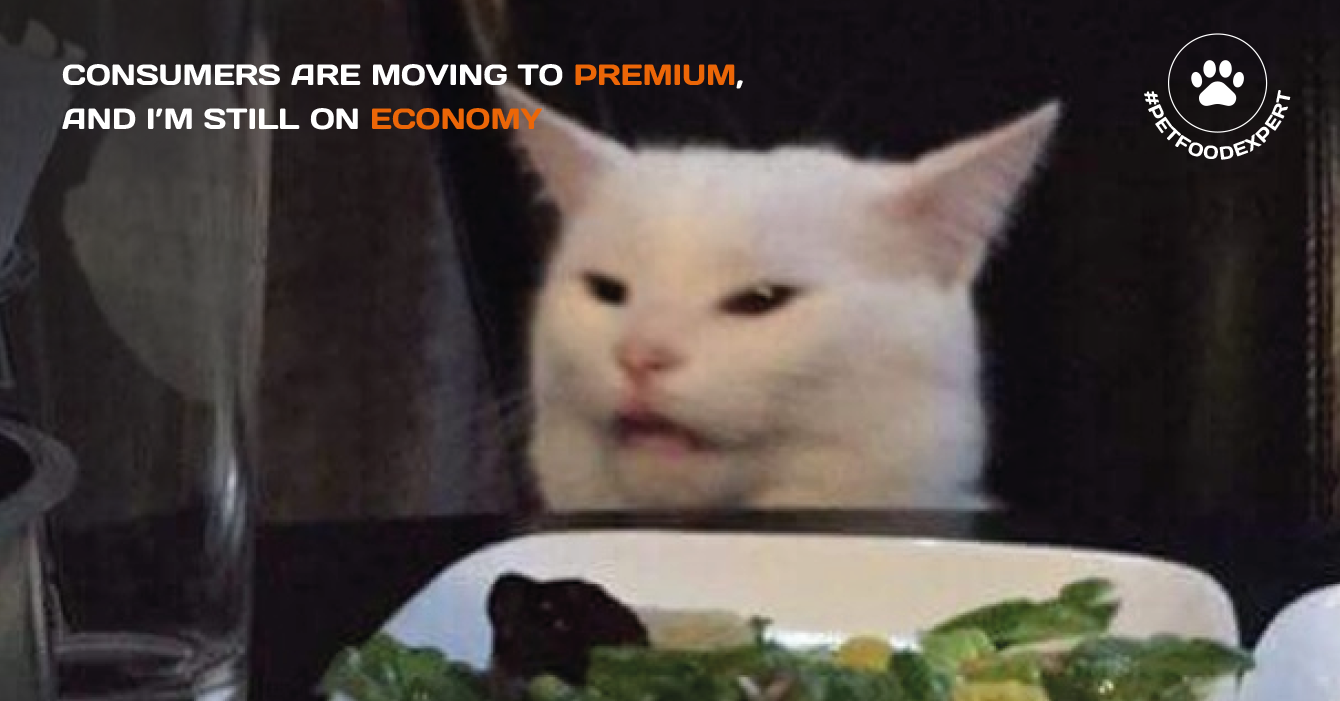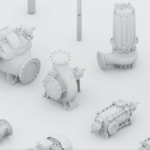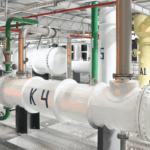The pet food industry has evolved from a utilitarian sector to a dynamic, high-growth global market fuelled by a powerful trend towards humanisation of animals, rising pet ownership levels and an increased focus on animal health and sustainability. As of 2025, the global pet food market is estimated to be worth approximately $158.4 billion, with a projected compound annual growth rate (CAGR) of 5.8% through 2030. The European market is worth $44.8 billion (CAGR 4.3%), while Ukraine's sustainable sector is showing impressive growth of $91.6 million with a significant CAGR of 10.8%. This key analysis examines the main market segments, their characteristics, advantages, disadvantages and the evolutionary priorities of consumers that are shaping the future of pet nutrition worldwide.
Market overview: global, European and Ukrainian realities
Global dynamics
The global animal feed market has grown from $103 billion in 2020 to $158.4 billion in 2025. This growth is supported by high pet ownership rates (67% of households in key markets) and consumers' shift towards premium, health-focused products.
Geographical distribution: North America leads with a 42.5% share ($67.3 billion), followed by Europe (28%) and the Asia-Pacific region (CAGR 8-9%).
Types of animals: Dogs account for 42% of revenue ($66.5 billion), cats for 35% ($55.4 billion).
Product formats: Dry food dominates (42.5% share), but wet food is growing faster (CAGR 4.7%) due to its appeal and hydration benefits. Treats and snacks, valued at $20 billion, are the fastest growing segment with a CAGR of 6.1%.
Key countries: United States ($52 billion, premiumisation), China ($15 billion, urbanisation), Brazil ($10 billion, e-commerce growth).
European characteristics
The €40 billion ($44.8 billion) European market is characterised by sophistication and high standards.
Animal demographics: Cat food slightly outpaces dog food in terms of cost (47% vs. 35%), reflecting the prevalence of urban owners who live in apartments.
Product trends: Wet food accounts for a significant 35% share, while treats lead growth (CAGR 4.6%). Organic and natural segments are expanding at a rate of 7.4%.
Market leaders: Germany ($8 billion), the United Kingdom ($6 billion) and France ($5 billion) dominate. Sustainability is a key driver, with 58% of sales coming from environmentally conscious brands.
Ukrainian realities
Despite geopolitical challenges and the realities of war, the animal feed market in Ukraine is demonstrating impressive resilience and potential.
Market size: $91.6 million in 2025 (volume of 250,000 tonnes), with a CAGR of 10.8%.
Key characteristics: Cats dominate pet ownership (66%), driving demand for wet food (50% share).
Local leader: Kormotech holds a 20% market share, reaching a turnover of $162.7 million in 2024 (+6.5%) and increasing exports by 63%.
Change in distribution: Online sales grew by 40% after 2022, highlighting the market's adaptability.
Forecast: The market is projected to reach $130 million by 2029, driven by a 14% increase in animals on prepared diets in 2024.
Market segmentation and class differences: from economy class to holistic
Animal feed is segmented according to quality, determined by the source of ingredients, nutritional value and compliance with standards such as FEDIAF (European Pet Food Industry Federation) recommendations.
Economy segment
- Features: The most affordable mass-produced products. They are based on cheap grains (corn, wheat, soy) and meat by-products. They contain artificial flavours, colours and preservatives.
- Nutritional profile: Low protein content (15-20%, often of plant origin), digestibility 60-70%. Meets the minimum requirements of FEDIAF/AAFCO, but has low bioavailability.
- Health effects: Suitable for short-term feeding. Prolonged use may lead to allergies, digestive problems or nutrient deficiencies due to fillers and low-quality ingredients.
- Market share: 40%.
- Examples: Generic supermarket brands ($3-$5/kg).
- Standards: Basic compliance with regulations; significant variability in quality.
Premium segment
- Features: Balanced formulas with named meat flours or dehydrated meat. Reduced grain content, added vitamins, minerals and sometimes prebiotics. May contain some preservatives.
- Nutritional profile: Average protein content (20-30%), digestibility 80-85%. Often adapted to life stages (e.g. formulas for older dogs as recommended by FEDIAF).
- Health effects: Suitable for daily feeding; improves coat condition and energy levels compared to economy segment products.
- Market share: 35%.
- Examples: Brands such as Purina ONE and Iams ($5-$10/kg).
- Standards: Adheres to stricter formulation standards with named protein sources.
Super-premium segment
- Features: High-quality, clearly defined ingredients (e.g. chicken fillet, salmon). Uses easily digestible grains (brown rice, oats) or grain-free formulas. Includes functional additives (glucosamine, omega-3/6) and avoids artificial additives.
- Nutritional profile: High protein content (30-40%), digestibility 85-90%. Often exceeds minimum requirements (e.g. taurine levels for cats).
- Health effects: Supports joint, skin/coat and immune health. Ideal for active animals or those with sensitivities. Often recommended by veterinarians.
- Market share: 25% (growing at a CAGR of 5-7%).
- Examples: Brands such as Royal Canin, Hill’s Science Diet, Farmina N&D ($10+/kg).
- Standards: Stricter compliance with FEDIAF/AAFCO; high transparency of labelling.
Holistic segment
- Features: Uses human-grade, all-natural ingredients (antibiotic-free meat, organic vegetables). Includes superfoods (flax, turmeric) and natural preservatives. Often grain-free and free of all artificial ingredients.
- Nutritional profile: Very high protein content (40-50%), digestibility 90-95%. Includes probiotics/prebiotics and often exceeds all minimum recommendations.
- Health effects: Ideal for animals with severe allergies, sensitive digestion or chronic conditions. Promotes overall longevity and vitality.
- Market share: 5% (growing at a CAGR of 10%).
- Examples: Brands such as Orijen, Acana, Open Farm ($15+/kg).
- Standards: The highest industry standards, often with organic certification and a focus on biological appropriateness.
Emerging niche segments
- Vegan/Vegetarian: 2-3% share, CAGR 12%. Plant proteins, although controversial for obligate carnivores such as cats due to their need for taurine.
- Raw/BARF: 5% share, CAGR 8%. Minimally processed, mimics a wild diet. Presents logistical and safety (bacterial) challenges.
- Insect-based: 1% share, CAGR 15%. Sustainable alternative protein with ~60% lower carbon footprint than beef.
- Therapeutic/Prescription: 10% share, CAGR 6.5%. Developed for specific medical conditions (renal, diabetic, allergic) with validation according to FEDIAF protocols.
- Personalised: 2% share, CAGR 13%. AI-driven individual blends based on breed, age and health data, supported by FEDIAF energy recommendations.
Consumer trends and priorities
- Premiumisation: 40% of consumers are switching to higher quality segments.
- Sustainability: 44% of manufacturers use recycled ingredients; eco-friendly packaging is a significant purchasing factor, with safe meat derivatives from human food chains.
- Health and well-being: Functional ingredients such as probiotics are present in 30% of new products. Demand for specific health benefits (joints, weight control) is growing, with taurine and arginine as key nutrients.
- Digitalisation: The share of e-commerce grew from 32% (2020) to 40% (2022). In Ukraine, online sales grew by 40% after 2022.
Regional characteristics:
- USA/Europe: Promoting premiumisation and specialised nutrition.
- Ukraine: Balancing affordability and quality, with growing environmental awareness.
- Asia: Rapid growth in cat ownership and demand for wet food due to urbanisation.
Conclusion
The global animal feed market is a complex, multi-layered ecosystem that offers enormous opportunities for those who can navigate its nuances. From the mass economy segment to specialised holistic formulas, success depends on innovation, unwavering quality standards and a deep understanding of regional shifts in consumer preferences. Thanks to FEDIAF's scientifically based recommendations on nutrient levels and adaptations to different stages of an animal's life, the future belongs to brands that effectively combine science-based nutrition with sustainability and digital engagement, transforming the simple act of feeding into an expression of care and responsibility.
For proactive manufacturers, the bowl is far from half empty — it is overflowing with potential.For proactive manufacturers, the bowl is far from half empty — it is overflowing with potential.
A deep understanding of regional shifts in consumer preferences. Thanks to FEDIAF's scientifically based recommendations on nutrient levels and adaptations to different stages of animal life, manufacturers can effectively respond to market needs. In this context, the expertise of Steiner Ukraine, a leader in the development of innovative feeds made from high-quality ingredients, plays a key role. The company combines local knowledge with global standards, offering products that support the health and longevity of pets. If you want to take your business to the next level, contact Steiner Ukraine today — take advantage of their expertise to create competitive solutions!
Please contact us at +380 44 3907338 or visit steiner.com.ua for detailed consultation.
Read also “Pet food packaging: how Steiner turns trends into your wins” and “Premium pet food market: how health claims affect pricing“



